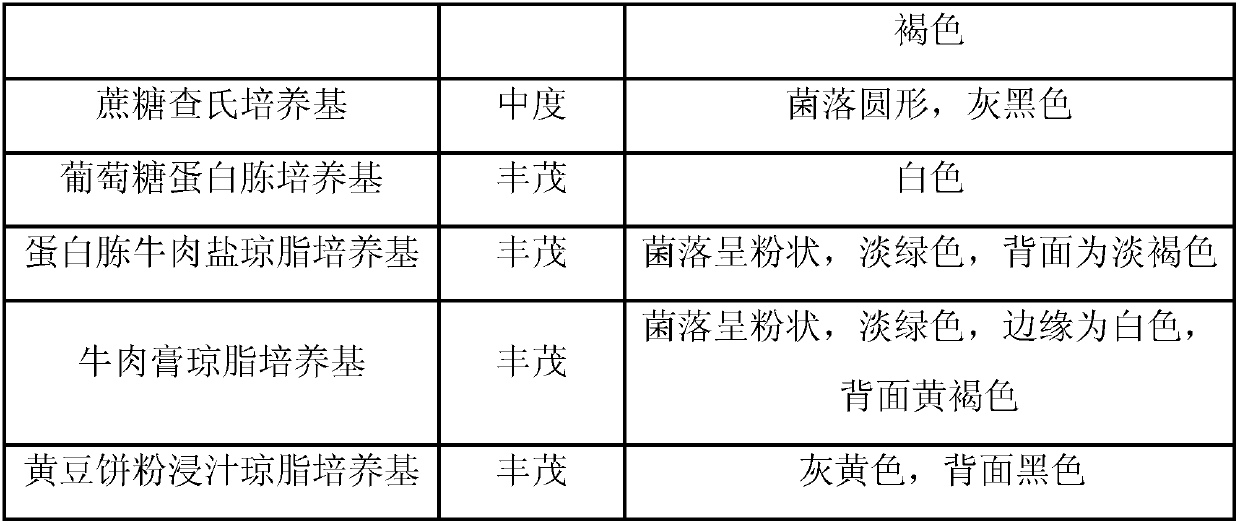Method for preparing 1,25-dihydroxyl vitamin D3 by microbial transformation
A technology for the transformation of dihydroxyvitamins and microorganisms, which can be applied to microorganism-based methods, biochemical equipment and methods, microorganisms, etc., and can solve the problems of complex operation, low yield, complicated separation and purification, etc., and achieve mild conversion conditions and process routes. Short, conversion-enhancing effects
- Summary
- Abstract
- Description
- Claims
- Application Information
AI Technical Summary
Benefits of technology
Problems solved by technology
Method used
Image
Examples
Embodiment 1
[0035] (1) The weight percentage is 1.5% glucose, 0.5% peptone, 0.5% yeast powder, 1% corn steep liquor, 0.5% NaCl, 0.1% CaCO 3 Mix well with 95.9% distilled water, adjust the pH to 7.5, take out 100 mL of culture medium, place it in a 500 mL shake flask, and sterilize at 121°C for 30 minutes.
[0036] Prepare a spore suspension. All the spores on the plate culture were put into an Erlenmeyer flask (containing glass beads) containing 20 ml of sterile water, and the spore suspension was made by shaking the bed at 260 rpm for about 15 minutes. At the same time, the spore liquid was counted by a plate. After three counts, the amount of spores per milliliter was basically stable at 10 8 Pcs / ml.
[0037] 5 mL of the spore suspension was inoculated into the medium, and cultured on a shaker with a rotation speed of 220 rpm and a temperature of 27°C for 4 days.
[0038] (2) Add prepared 50mg dextrin, 4ml water, 40mg glycerol, 50mg 1α-hydroxyvitamin D to the medium 3 , 100mg Span 60 and 6mL ...
Embodiment 2
[0043] (1) The weight percentage is 1.5% glucose, 1% yeast powder, 0.5% soybean powder, 0.5% corn steep liquor, 0.5% NaCl, 0.1% (NH 4 ) 2 SO 4 , 0.1% CaCO3 and 95.8% distilled water are mixed evenly, 100 mL of culture medium is taken out and placed in a 500 mL shake flask, and sterilized at 121°C for 30 min.
[0044] A spore suspension was prepared, and the same concentration of the spore suspension was prepared using the method in Example 1.
[0045] 5 mL of the spore suspension was inoculated into the medium, and cultured on a shaker at a rotation speed of 240 rpm and a temperature of 28°C for 3 days.
[0046] (2) Add prepared 200mg dextrin, 8ml water, 100mg glycerol, 100mg 1α-hydroxyvitamin D to the medium 3 , 200mg Span 80, 8mL diol fatty acid ester mixed to make a mixture, continue to cultivate 4d, to obtain fermentation broth. The mixing step of this mixture is to first dissolve 200mg dextrin in 8ml hot water, then 100mg glycerin, 100mg1α-hydroxyvitamin D 3 Dissolve 200mg Tween...
Embodiment 3
[0051] (1) The weight percentage is 1.5% glucose, 0.5% peptone, 1.5% corn steep liquor, 0.5% NaCl, 0.2% K 2 HPO 4 , 0.1﹪CaCO 3 Mix well with 95.7% distilled water, adjust the pH to 7.5, take out 100mL medium and place it in a 250mL shake flask, and sterilize it at 121°C for 30min.
[0052] A spore suspension was prepared, and the same concentration of the spore suspension was prepared using the method in Example 1.
[0053] 4 mL of the spore suspension was inoculated into the medium, and cultured on a shaker with a rotation speed of 220 rpm and a temperature of 27°C for 3 days.
[0054] (2) Add prepared 50mg dextrin, 8ml water, 20mg glycerol, 100mg 1α-hydroxyvitamin D to the medium 3 , 150mg stearic acid, 50mg pectin, 8mL absolute ethanol mixed to make a mixture, continue to cultivate 4d, to obtain fermentation broth. The mixing step of this mixture is to first dissolve 50mg dextrin and 50mg pectin in 8ml hot water, then 20mg glycerin, 100mg 1α-hydroxyvitamin D 3 Dissolve 150mg stear...
PUM
 Login to View More
Login to View More Abstract
Description
Claims
Application Information
 Login to View More
Login to View More - Generate Ideas
- Intellectual Property
- Life Sciences
- Materials
- Tech Scout
- Unparalleled Data Quality
- Higher Quality Content
- 60% Fewer Hallucinations
Browse by: Latest US Patents, China's latest patents, Technical Efficacy Thesaurus, Application Domain, Technology Topic, Popular Technical Reports.
© 2025 PatSnap. All rights reserved.Legal|Privacy policy|Modern Slavery Act Transparency Statement|Sitemap|About US| Contact US: help@patsnap.com


